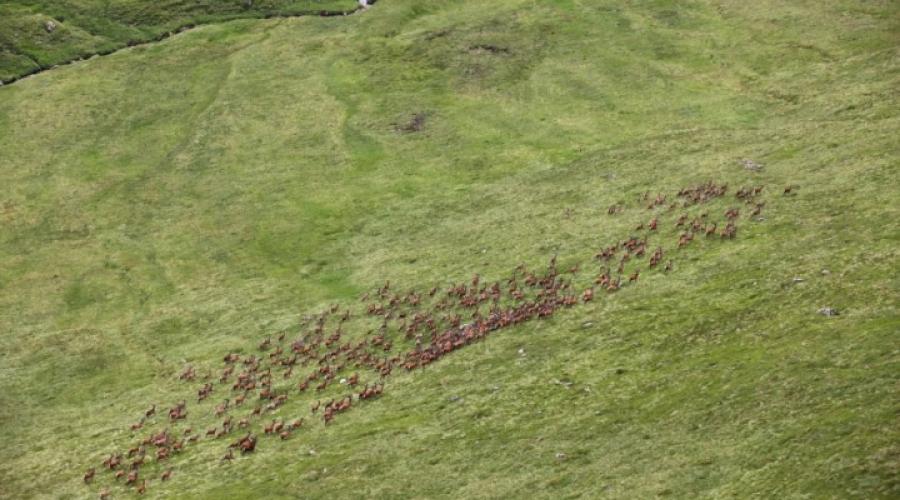
Deer counting
Knowing how many deer use an area is important to determine how to manage populations for sporting or conservation purposes.
Deer populations are usually estimated using either direct observation counting or indirect counting methods.
A deer manager will get more value from a deer census if the data is used together with information such as the condition of the habitats.
View a map of Post-2000 deer densities from Deer Commission Scotland data.
Direct observation counting
Direct observation counts can provide deer managers with a snapshot of a population within the count area on a particular day or night.
Counts can begin to show population trends when the same method is used several times – especially if carried out over large areas in a short time frame.
Direct counting methods include:
- ground counting by teams on foot
- aerial counting using helicopters or fixed-wing aircraft
- night-time ground counting using thermal imaging cameras
You should consider local conditions to decide on the most suitable method to use.
Watch our film of thermal imaging count work.
The purpose of helicopter deer counting is to provide land managers with information on deer populations at a landscape scale.
Indirect counting
Deer managers can assess deer numbers using indirect methods such as dung counting where direct observation is difficult.
Dung counting involves assessing how much dung is deposited over a period of time in a specified area to estimate deer usage of the area. This method was traditionally used in woodland areas only. Some deer managers are now choosing to use specially designed versions of this method over open ground.
Find out more
Read our latest press release - New green tech could transform deer count (18 November 2022)



